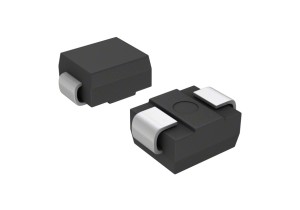What are the different types of diodes in electronics?
Diodes stand as foundational components in the realm of electronics, facilitating current flow in one direction while blocking it in the reverse direction. These semiconductor devices exhibit a wide array of variations and functionalities, each tailored to specific applications and requirements in electronic circuits. From rectification and signal demodulation to voltage regulation and light emission, diodes play diverse roles in shaping the behavior and performance of electronic systems. In this blog post, we embark on a journey through the diode universe, unraveling the distinct types of diodes in electronics, their unique properties, applications, and significance in modern electronic design.
Rectifier Diodes: Converting AC to DC
Rectifier diodes are among the most common types of diodes used in electronics for converting alternating current (AC) to direct current (DC). These diodes allow current to flow in one direction only, enabling the conversion of AC signals into a unidirectional DC output. Rectifier diodes come in variations such as silicon diodes, Schottky diodes, and fast-recovery diodes, each offering specific advantages in rectification applications.
Light-Emitting Diodes (LEDs): Illuminating the Future
Light-Emitting Diodes (LEDs) are semiconductor devices that emit light when forward biased. LEDs have revolutionized lighting technology, offering energy-efficient illumination in a wide range of applications, including display panels, indicators, automotive lighting, and general lighting. The color of light emitted by an LED is determined by the materials used in its construction, making LEDs versatile and adaptable to various lighting needs.
Zener Diodes: Voltage Regulation and Overvoltage Protection
Zener diodes are specialized diodes designed to operate in the reverse breakdown region, maintaining a nearly constant voltage across their terminals. Zener diodes are commonly used for voltage regulation, voltage reference, and overvoltage protection in electronic circuits. By utilizing the Zener effect, these diodes ensure a stable voltage across a load, making them essential components in power supplies and voltage regulation circuits.
Schottky Diodes: Fast Switching and Low Forward Voltage Drop
Schottky diodes are characterized by their fast switching speed and low forward voltage drop compared to conventional silicon diodes. Schottky diodes are widely employed in high-frequency circuits, rectification applications, and power electronics where efficiency and speed are paramount. The metal-semiconductor junction in Schottky diodes results in reduced forward voltage drop and improved performance in high-speed switching applications.
Avalanche Diodes: High Voltage Handling and Noise Generation
Avalanche diodes are diodes that operate in the avalanche breakdown region, where electron-hole pairs are generated by impact ionization. Avalanche diodes are capable of handling high voltages and currents, making them suitable for applications such as voltage regulation, overvoltage protection, and noise generation in electronic circuits. The avalanche effect allows these diodes to dissipate excess energy efficiently and protect sensitive components from voltage spikes.
Varactor Diodes: Tunable Capacitance for Frequency Modulation
Varactor diodes, also known as variable capacitance diodes or varicap diodes, exhibit a variable capacitance that changes with the applied reverse bias voltage. Varactor diodes are used in frequency modulation circuits, voltage-controlled oscillators, tuning circuits, and phase-locked loops to provide tunable capacitance for frequency modulation and signal processing applications. The capacitance modulation capability of varactor diodes enables precise control over the frequency of oscillators and filters in electronic systems.
Conclusion: Navigating the Diode Landscape
In the intricate world of integrated circuits, the fusion of electronic components onto a single chip embodies the pinnacle of semiconductor technology, enabling advanced functionalities, high performance, and compact design in a diverse range of electronic devices. By integrating transistors, resistors, capacitors, diodes, inductors, and crystals within a confined space, IC designers push the boundaries of innovation, shaping the landscape of modern technology and revolutionizing the way we interact with electronic systems.
The realm of diodes in electronics is vast and varied, encompassing a rich assortment of types that cater to diverse applications and functionalities in electronic circuits. From rectification and voltage regulation to light emission and signal modulation, diodes play crucial roles in shaping the behavior and performance of electronic systems, offering designers a versatile toolkit for achieving specific objectives and requirements in their designs.
As we traverse the diode landscape and uncover the myriad types and functions of these semiconductor devices, let us appreciate the ingenuity, versatility, and transformative power that diodes bring to the world of electronics. By harnessing the unique properties and capabilities of diodes, designers and engineers can craft innovative, efficient, and reliable electronic systems that drive progress, innovation, and technological advancement in myriad fields and industries.

